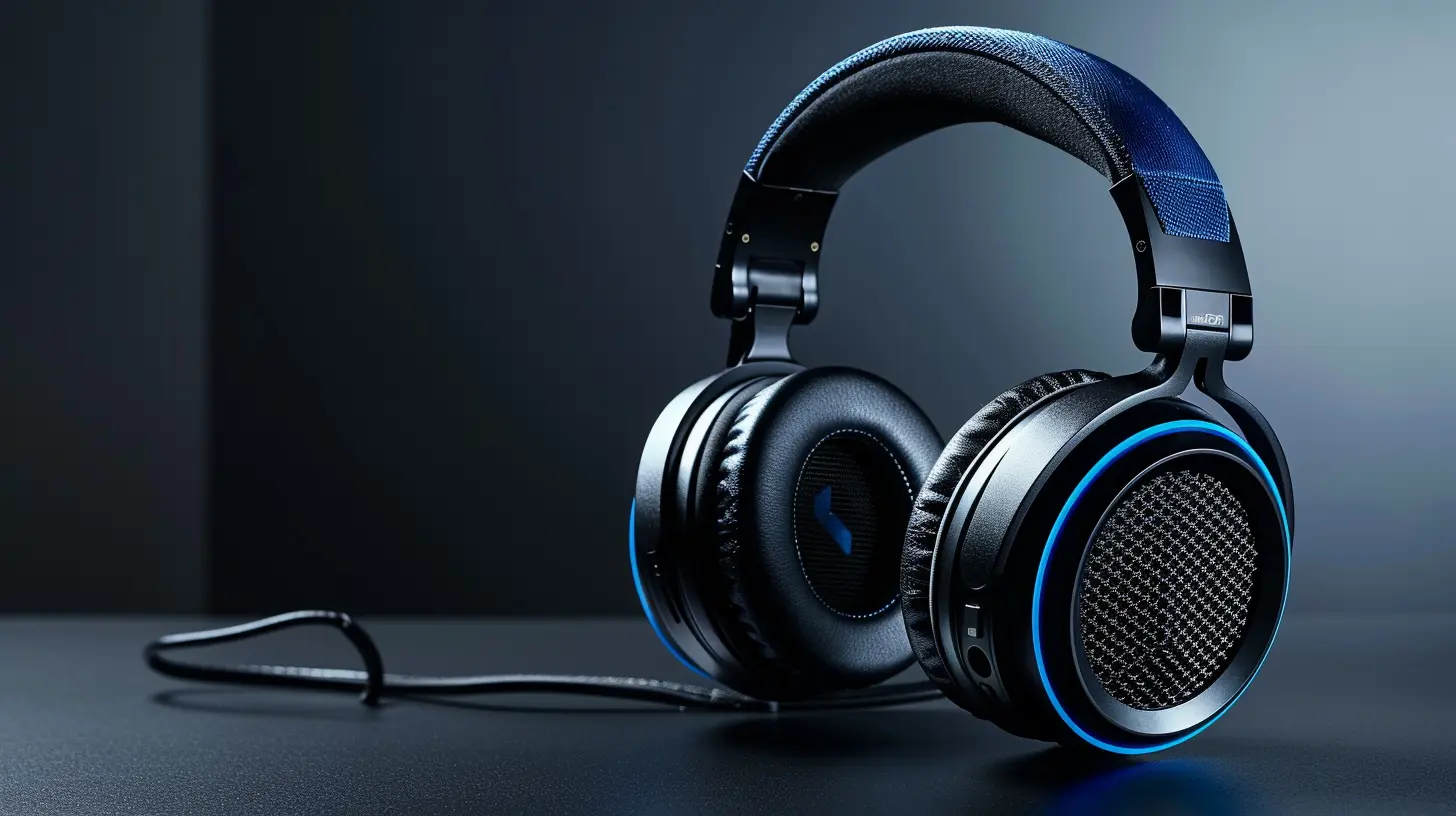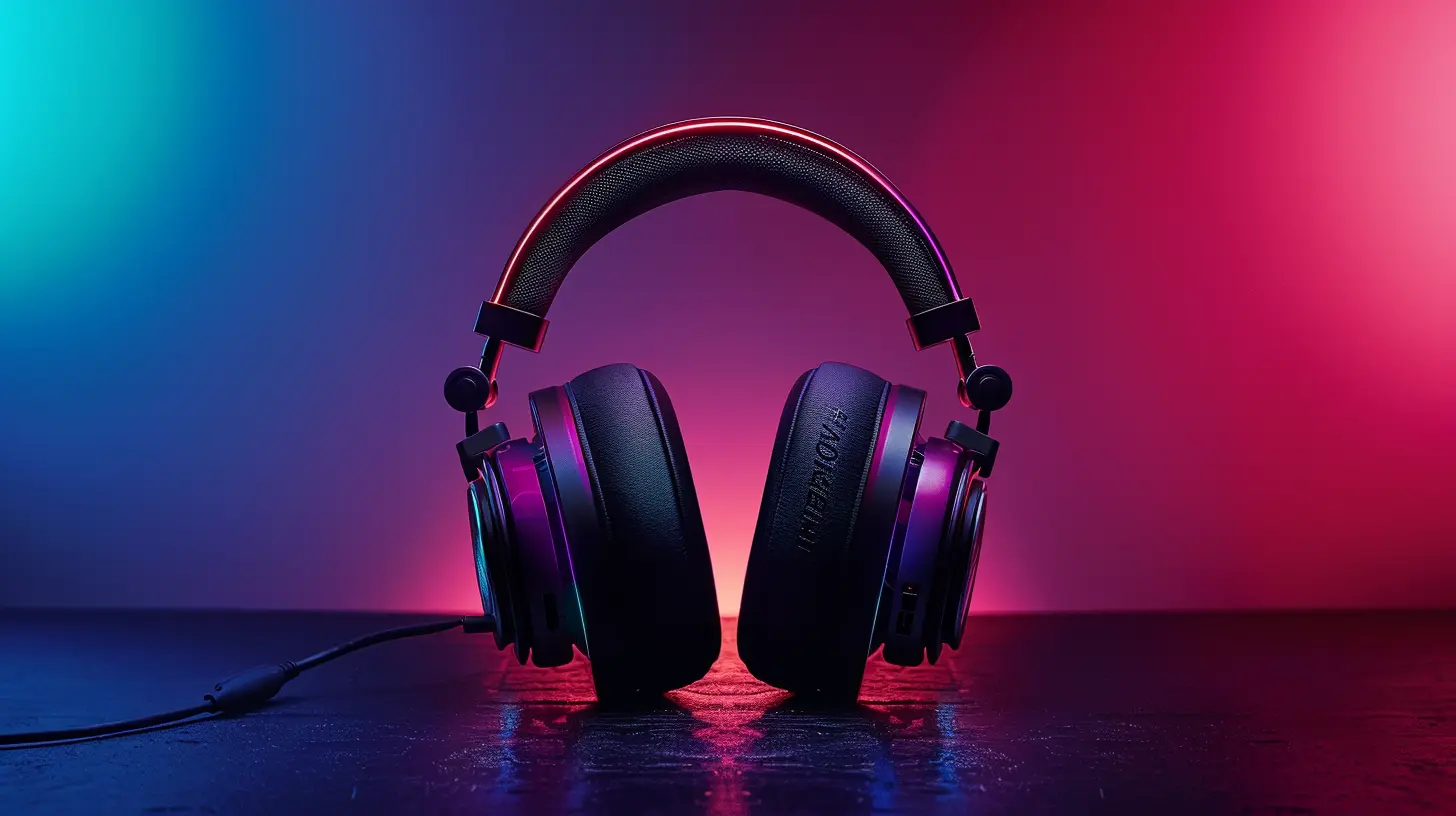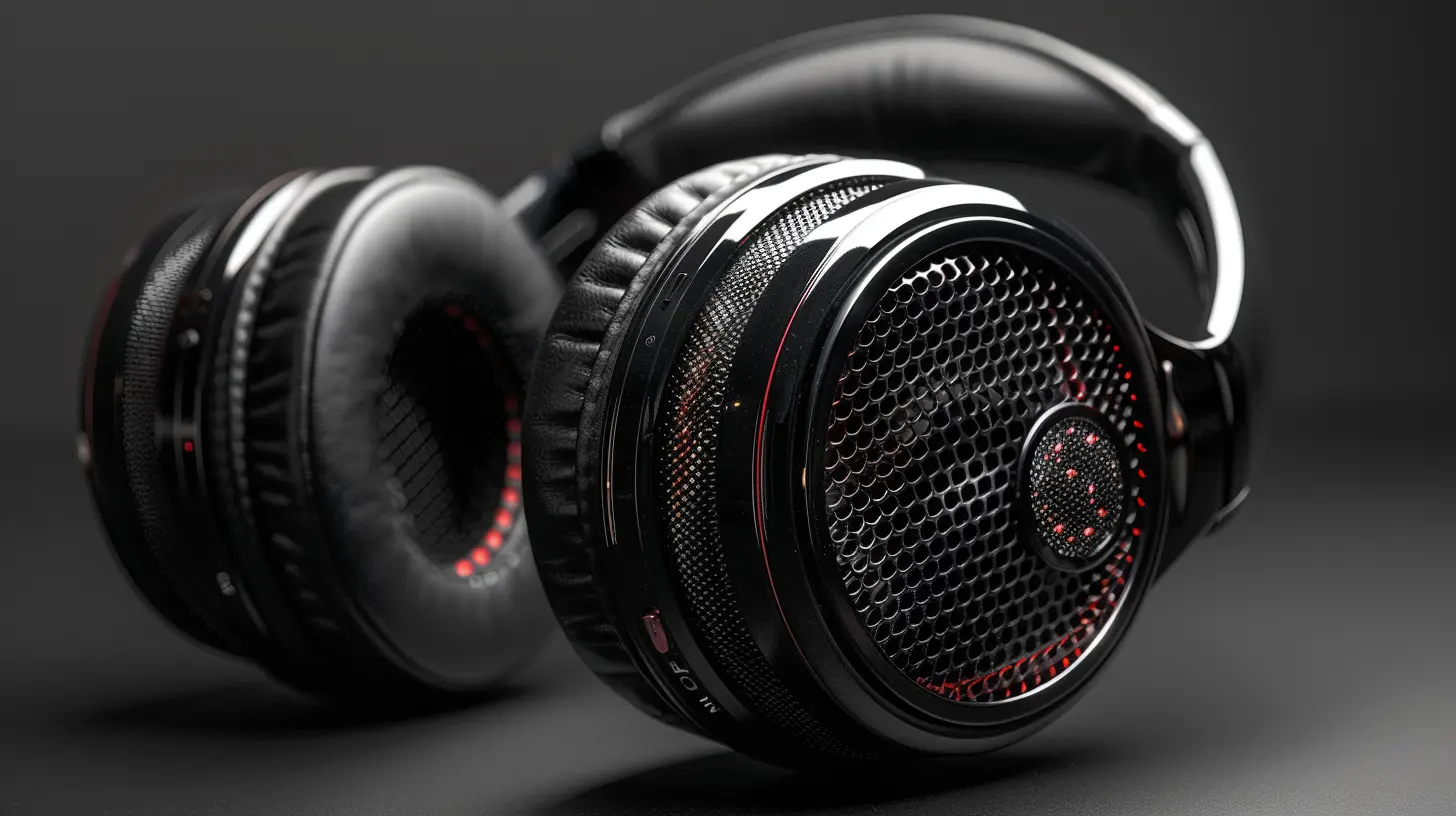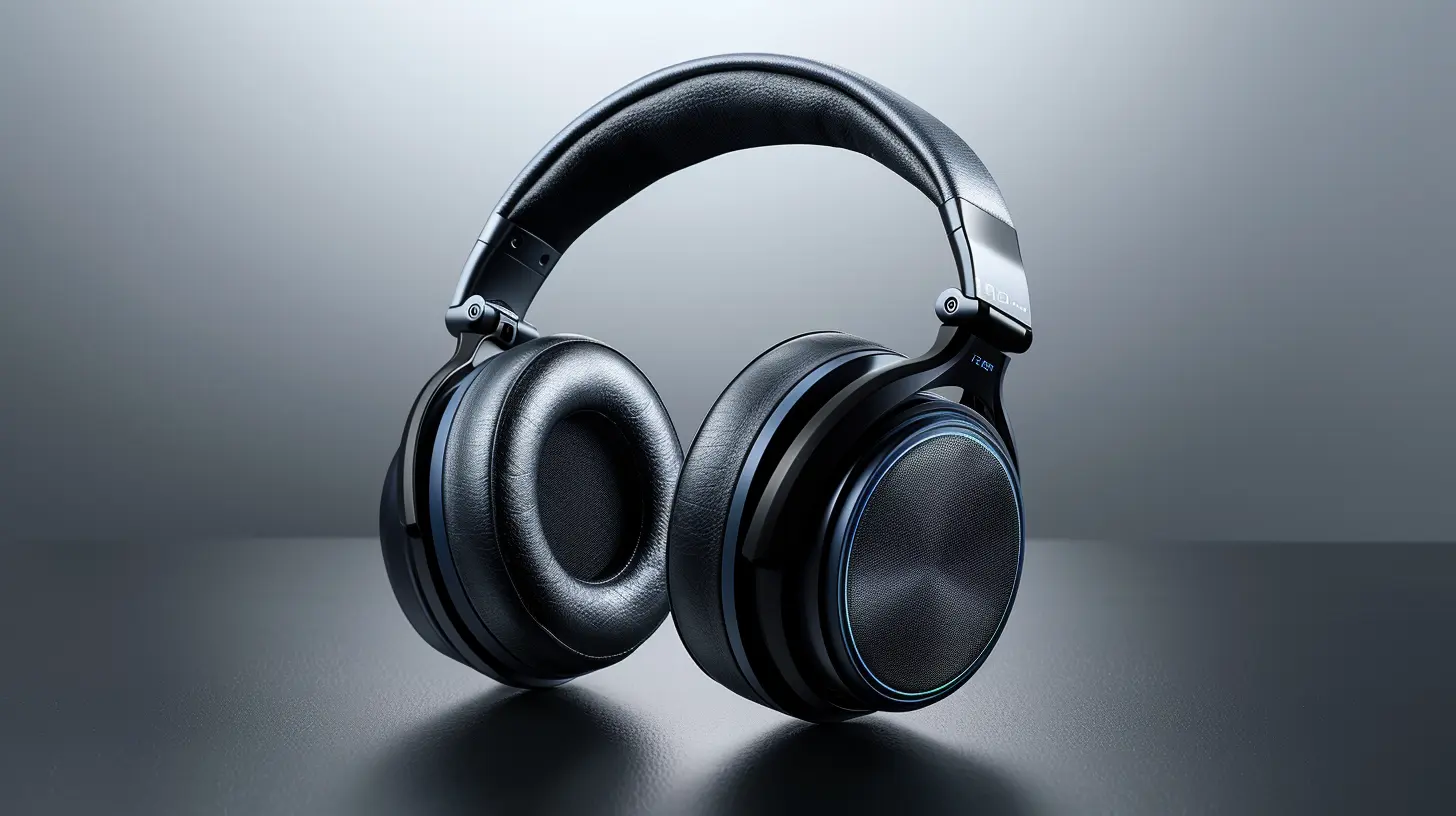How to Optimize Headphones for High-Resolution Audio
4 July 2025
You've just invested in a pair of high-quality headphones, but you're not quite getting that crisp, immersive sound you expected? Well, it's not just about having the right gear; optimizing your headphones is key to unlocking their full potential, especially when it comes to high-resolution audio. High-res audio is like the 4K of the sound world—it’s richer, clearer, and more detailed. But, just like a 4K TV needs the right settings and content to shine, so do your headphones.
In this guide, we’ll dive deep into how you can fine-tune your headphones for high-resolution audio, helping you get the best listening experience possible. Whether you're a casual listener or a serious audiophile, these tips will help you get the most out of your music.

Understanding High-Resolution Audio
Before we jump into the nitty-gritty of headphone optimization, let's first clear up what "high-resolution audio" (or hi-res audio) actually means. Essentially, it refers to audio files that have a higher sample rate and bit depth than standard CD-quality audio, which is 16-bit/44.1 kHz. Hi-res audio typically comes in formats like FLAC, ALAC, or WAV, and it can go up to 24-bit/192 kHz or even higher.In simple terms, high-resolution audio captures more details in the sound. It’s like going from a standard-definition movie to a high-definition one—you’ll notice nuances and layers of sound you didn’t hear before. But to truly appreciate it, you need to optimize your headphones properly.

1. Choose the Right Headphones
First things first: not all headphones are built to handle high-resolution audio. If your headphones aren’t up to the task, no amount of tweaking is going to help. So, it’s crucial to start with the right pair.Look for headphones that are labeled as “Hi-Res Audio Certified” by the Japan Audio Society (JAS). These headphones are designed to reproduce the full range of audio frequencies, often up to 40 kHz. Brands like Sony, Sennheiser, and Audio-Technica offer several models certified for high-res audio.
Over-Ear vs. In-Ear
The type of headphones you choose also matters. Over-ear headphones generally provide a better soundstage and more accurate bass response, which is ideal for high-resolution audio. In-ear monitors (IEMs) can also deliver excellent sound quality, but they might not have the same depth as over-ear models.Wired vs. Wireless
While wireless headphones are super convenient, most Bluetooth codecs (the technology that transmits sound wirelessly) compress audio. This compression can degrade the quality, making it harder to appreciate the finer details of high-res audio. If you're a stickler for sound quality, it's best to go wired. However, some Bluetooth codecs like LDAC and aptX HD support higher bitrates, so they’re a decent compromise if you prefer wireless.
2. Use a High-Resolution Audio Source
Even the best headphones won’t make a difference if your audio source is subpar. You can’t expect to hear all the intricate details in your music if you’re streaming heavily compressed MP3s from Spotify. For high-resolution audio, you need to use high-quality sources like FLAC, ALAC, or WAV files.There are several streaming services and platforms that offer high-resolution audio like Tidal HiFi, Amazon Music HD, and Qobuz. If you're playing music from your own collection, make sure it's in a lossless format. If you're unsure, check the file's bit depth and sample rate—anything 24-bit/96 kHz or higher is considered high-res.

3. Invest in a Quality DAC (Digital-to-Analog Converter)
Here’s where things get a bit more technical but stick with me. If you're listening to high-res audio through your computer or phone, the built-in DAC might not be cutting it. A DAC is responsible for converting digital audio data into analog sound waves that your headphones can play. The problem? Many built-in DACs just aren’t designed to handle high-resolution audio properly. They can bottleneck the sound, reducing the overall quality.Investing in an external DAC can make a world of difference. A DAC like the AudioQuest DragonFly or FiiO E10K can dramatically improve the sound quality by ensuring that the conversion process preserves all the details in your music.
Portable vs. Desktop DACs
If you're often on the go, a portable DAC that connects to your phone or laptop is a great option. But if you do most of your listening at home, a desktop DAC will usually offer better performance and more connectivity options.4. Amp Up Your Headphones (Literally)
Some headphones, especially those designed for high-res audio, require more power to perform at their best. Enter the headphone amplifier. If you find that your headphones sound weak or flat, it might be because your device isn’t providing enough power. A headphone amp can give your headphones the extra boost they need to deliver fuller, more dynamic sound.Many DACs come with built-in headphone amplifiers, but you can also purchase standalone amps if you're really looking to fine-tune your setup. Amps like the Schiit Magni or JDS Labs Atom are affordable options that can make a noticeable difference.
5. Adjust Your EQ Settings
Equalizers (EQ) can be a game-changer when optimizing your headphones for high-resolution audio. Most audio players, whether on your phone, computer, or dedicated music player, come with built-in EQ settings. If you're using high-res audio, it's worth tweaking these settings to suit your personal taste and the type of music you're listening to.Flat vs. Custom EQ
A "flat" EQ setting means that none of the frequencies (bass, midrange, treble) are boosted or reduced. This is often the best starting point for high-resolution audio, as it lets you hear the music as it was originally mixed. However, some people prefer to adjust the EQ to emphasize certain aspects of the sound, like boosting the bass for electronic music or enhancing the treble for classical tracks.Be careful not to overdo it, though. Too much EQ tweaking can distort the sound and take away from the natural clarity of your headphones.
6. Ensure Proper Fit and Comfort
Even the best headphones won’t sound their best if they’re not sitting correctly on your ears. A poor fit can lead to sound leakage, reduced bass, and an overall less immersive experience. Here’s a quick tip: always make sure your headphones fit snugly but comfortably. Over-ear models should fully enclose your ears, while in-ear models should create a good seal in your ear canal.Ear Pads and Tips
For over-ear headphones, consider upgrading to memory foam ear pads if your current ones aren’t providing a good seal. For in-ear monitors, try out different sizes of ear tips (silicone or foam) until you find one that fits perfectly in your ear. A proper fit will ensure that you’re getting the full frequency range and detail in your music.
7. Reduce External Noise
Background noise can ruin an otherwise perfect listening experience. Whether you're on a busy train or in a noisy cafe, external sounds can drown out the finer details of high-res audio. To combat this, you can either use noise-canceling headphones or sound-isolating models.Active Noise-Canceling (ANC)
Active noise-canceling headphones use built-in microphones to detect external noise and generate sound waves that cancel it out. This can be incredibly effective, especially in environments with constant low-frequency noise like airplane engines or air conditioners.Passive Noise Isolation
If you don’t want to go the ANC route, sound-isolating headphones can block out noise simply through their design. Over-ear models with good ear pads and in-ear models with properly fitting tips can create a seal that keeps external noise at bay.8. Use High-Quality Cables
If you’re using wired headphones, don’t overlook the importance of high-quality cables. Cheap or poorly made cables can introduce noise, reduce signal quality, or even break over time. Many audiophile-grade headphones come with detachable cables, which makes it easy to upgrade to higher-quality options. Look for cables that offer good shielding to minimize interference, and avoid excessively long cables that can degrade the signal.
9. Keep Your Gear Clean
This one’s easy to overlook, but it’s crucial. Dust, earwax, and grime can build up on your headphones over time, clogging drivers and reducing sound quality. Regularly clean your headphones using a dry cloth, compressed air, or a soft brush. For in-ear monitors, clean the ear tips and the nozzles with isopropyl alcohol to ensure sound can flow freely.10. Update Your Firmware
If you're using wireless or smart headphones, manufacturers often release firmware updates that improve performance, fix bugs, or even add new features. Check the manufacturer's website or app to ensure your headphones are running the latest firmware. This can sometimes bring noticeable improvements in sound quality, especially when paired with high-res audio sources.
Wrapping It Up
By following these steps, you’ll be well on your way to optimizing your headphones for high-resolution audio. It’s about more than just plugging in a pair of cans and hitting play—it’s about creating the ideal environment for your headphones to truly shine. From using the right audio source to investing in a DAC and tweaking your EQ, these small adjustments can make a world of difference in your listening experience.So, what are you waiting for? Go ahead, plug in, and lose yourself in the music—because when you’ve got your headphones optimized for high-res audio, every note is a masterpiece.
all images in this post were generated using AI tools
Category:
HeadphonesAuthor:

John Peterson
Discussion
rate this article
2 comments
Jacqueline Robinson
Great read! Optimizing headphones for high-resolution audio involves ensuring proper DAC settings, using lossless formats, and adjusting EQ settings to enhance clarity and detail. These tips truly elevate the listening experience!
November 12, 2025 at 3:47 AM
Andrew Green
Stop settling for mediocre sound! To truly appreciate high-resolution audio, you must optimize your headphones or risk missing out on the rich details and clarity that elevate your listening experience. Dive deep!
July 9, 2025 at 4:58 AM

John Peterson
Thank you for the reminder! Optimizing headphones is crucial for fully enjoying high-resolution audio. It really makes a difference in capturing those rich details!


